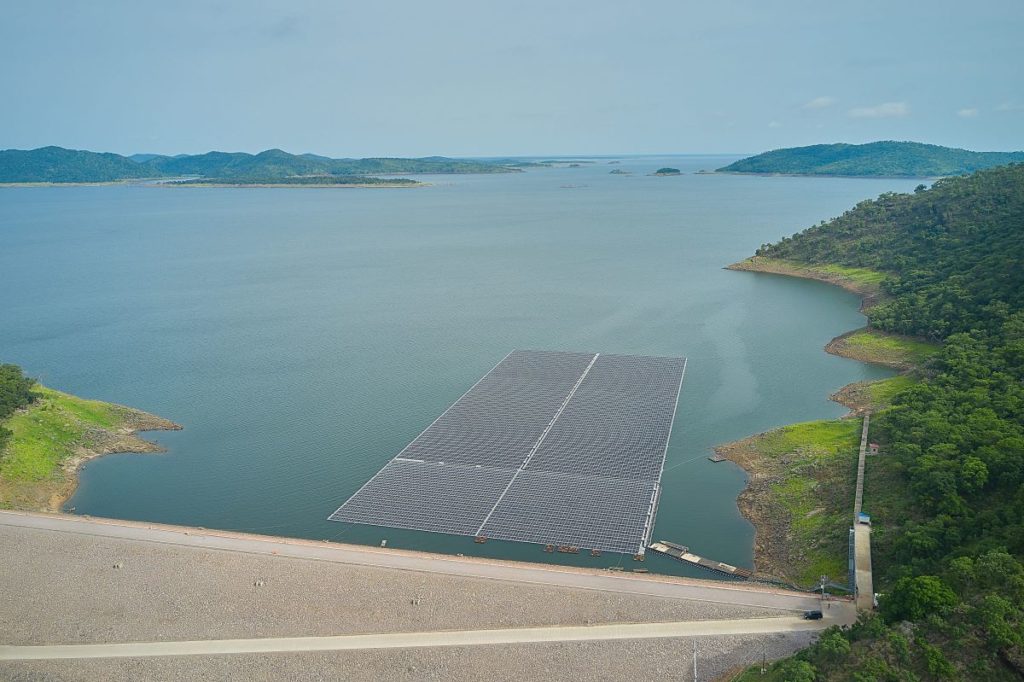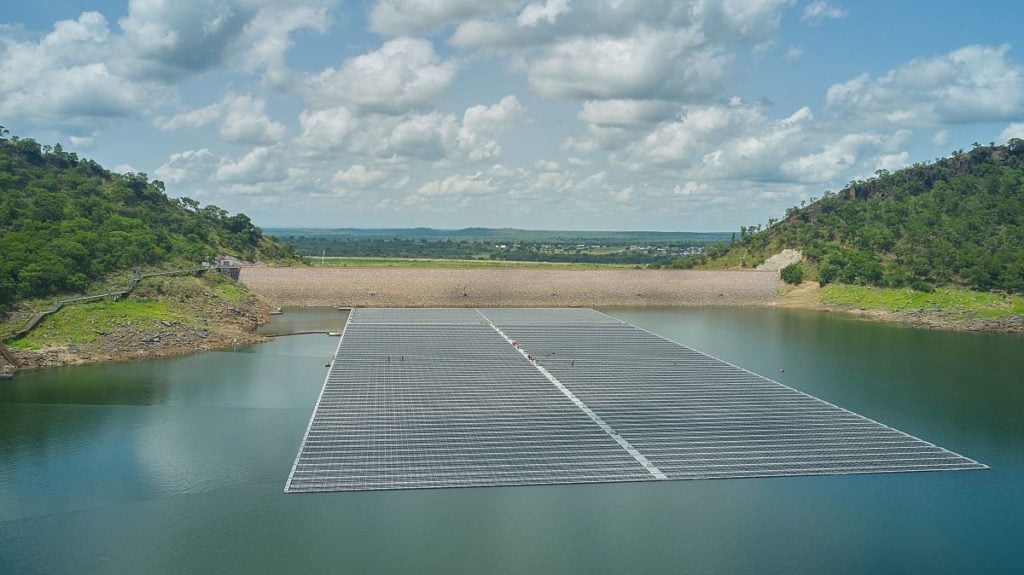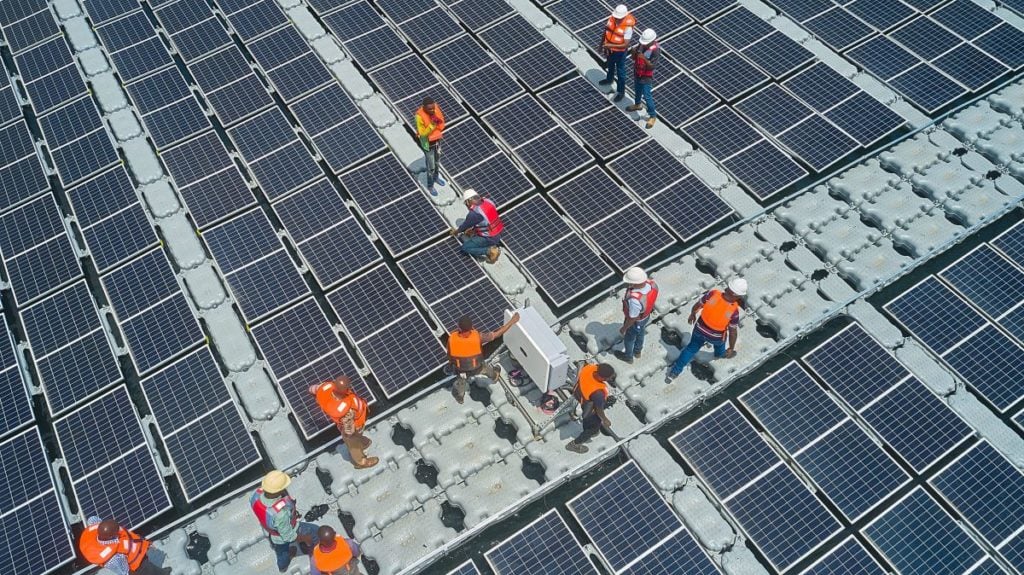
Ghana is on track to achieve its goal of universal access to electricity by 2025 with the successful implementation of the Bui Hydro-Solar PV Hybrid (HSH) system. Ghanaian Minister for Energy Dr. Matthew Opoku Prempeh said the groundbreaking project, developed by the Bui Power Authority (BPA), which uses Huawei inverters, transformers and energy storage system, marks a major milestone in Ghana and, for that matter, Africa’s clean energy transition.
“Bringing the Bui Hydro-Solar PV Hybrid system online enables us to connect more customers to achieve our universal access target of 90% by 2024, way ahead of the UN Sustainable Development Goal of universal access to electricity by 2030,” Opoku Prempeh added. “It also contributes to delivering on the promise in our National Energy plan to increase the penetration of renewable energy by 10% by 2030.”
Unlock unlimited access for 12 whole months of distinctive global analysis
Photovoltaics International is now included.
- Regular insight and analysis of the industry’s biggest developments
- In-depth interviews with the industry’s leading figures
- Unlimited digital access to the PV Tech Power journal catalogue
- Unlimited digital access to the Photovoltaics International journal catalogue
- Access to more than 1,000 technical papers
- Discounts on Solar Media’s portfolio of events, in-person and virtual
Ghana has made remarkable progress in providing access to electricity. Currently, 43% of the total population in sub-Saharan Africa lacks electricity, but Ghana is on course to achieve full access within 18 months.
Variable Renewable Energy Strategy
The Bui HSH project is an important provider of variable renewable energy as Ghana seeks to diversify its energy mix. Construction of the solar plants began in October 2019, and the initial 50MWp solar PV facility began operating in November 2020. The BPA has also installed a 5MW Floating Solar Plant, the first of its kind in the sub-region. This strategy complements and reinforces the hydro power by ensuring the sustainable utilization of its reservoir.
The Bui hydroelectric dam utilises three 133MW generators at the site, giving a total output of 404MW as of June 2023. An additional 50MW of power is generated from the solar installations on site, with the total renewable power output, contributing around 6-7% of the total power generated in-country, expected to reduce greenhouse gas emissions by more than 47,000 tons per year.
The BPA has led discussions on locating additional solar plants near the GridCo substations in the Northern part of the country.
Officials are also keen to take advantage of the reservoir created by the construction of the Bui Dam to promote fishing and the irrigation of over 30,000 hectares of land for crops including maize, cashew and sugar cane. Developing the local farming industry is expected to boost employment and bring financial, environmental and social benefits to the region, thus improving the lives of local people.
A reliable and stable electricity supply
To help provide a continuous supply of electricity from the hydro dam, even when water levels are low in the dry season, the BPA added the solar element to the existing hydropower plant, harnessing the country’s abundant solar resources to generate clean power for Ghana’s national grid.
The combination of hydro and solar power, alongside a Battery Energy Storage System is what enables the plant to provide a stable supply of power to the grid day and night. This is important for the energy security of Ghana.

Energy Storage System
To keep the electrical grid operating correctly, supply and demand must be perfectly balanced at all times. When they are not, voltage changes can cause power outages and malfunctions, which can damage or destroy electrical equipment. A Battery Energy Storage System (BESS) is used for peak regulation, enabling seamless supply and smooth output of power. When renewable electricity generation surges, such as during hours of peak sunshine, the batteries in the storage system charge by drawing the excess power. Power is injected back into the grid during drops in output from the solar plants to smooth out fluctuations, smart digital technology connecting these networks to make the processes seamless.
The reliability of the inverters, a key component responsible for converting the DC power generated by the solar power plants into AC power transmitted over the grid, is of pivotal importance. According to a report issued by TÜV in March 2022, Huawei’s Smart PV Solution has achieved a 99.999% availability based on the operational data of a 2.2GW project in Qinghai, China. The company’s Smart PV Solutions are designed to withstand harsh environmental conditions, providing safe and cost-effective power supply and consumption for decades.
In addition, Huawei’s energy storage solution (ESS) delivers easy maintenance, secure and safe performance and uses high-density lithium batteries, saving 40% of the floor space.
The successful implementation of the Bui Hydro-Solar Hybrid (HSH) system represents a significant milestone for Ghana and West Africa as a whole. By embracing renewable energy and adopting innovative digital solutions, Ghana is leading the way towards a sustainable and prosperous future. The Bui HSH project demonstrates the immense potential of clean energy to drive economic development, improve livelihoods, and combat climate change in Africa.








